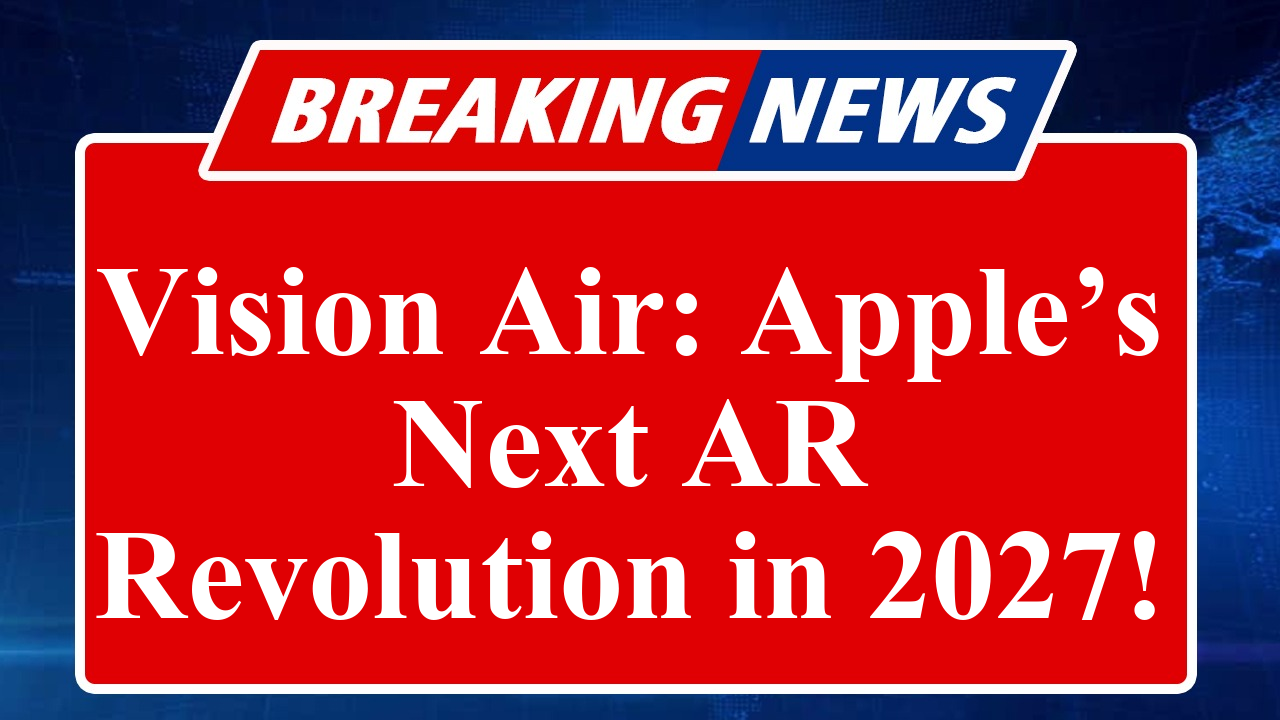“Apple’s Vision Air, slated for a 2027 release, promises a lighter, affordable mixed-reality headset, challenging the premium Vision Pro. With a 40% weight reduction, iPhone-grade processor, and a price range of $1,500-$2,000, it aims to make AR mainstream. Mass production is expected by Q3 2027, positioning Apple to compete with Meta in the XR market.”
Apple’s Vision Air: A Game-Changer in Mixed Reality by 2027
Apple is gearing up to transform the augmented reality (AR) landscape with its upcoming Vision Air headset, projected to launch in 2027. According to renowned analyst Ming-Chi Kuo, the Vision Air will be a lighter, more affordable alternative to the premium Apple Vision Pro, aiming to bring mixed-reality (XR) technology to a broader audience. The device is expected to enter mass production in the third quarter of 2027, with a design that prioritizes accessibility and consumer convenience.
The Vision Air is set to be over 40% lighter than the current Vision Pro, which weighs approximately 600-650 grams. This significant weight reduction will be achieved through strategic material changes, including a shift from glass to plastic optics and extensive use of magnesium alloy, as titanium was deemed too costly. Additionally, Apple plans to reduce the number of onboard sensors to further cut costs, making the headset more affordable with an estimated price range of $1,500 to $2,000, a stark contrast to the Vision Pro’s $3,999 price tag.
Powering the Vision Air will be Apple’s latest iPhone processor, likely an A-series chip, instead of the Mac-grade M-series chips used in the Vision Pro. This shift is expected to maintain performance while significantly lowering production costs. The headset will lack features like EyeSight, a display on the front of the Vision Pro that shows the wearer’s eyes, to further streamline its design and affordability.
Apple’s roadmap also includes an updated Vision Pro with an M5 chip, expected to enter mass production in Q3 2025, with shipments of 150,000-200,000 units by year-end. However, 2026 is anticipated to be a quiet year for Apple’s XR lineup, with no new headset launches planned. The Vision Air’s 2027 debut will mark a pivotal moment in Apple’s strategy to compete with Meta’s Quest headsets and Ray-Ban smart glasses, which have gained traction in the AR market.
The Vision Air is part of Apple’s broader vision to expand its XR ecosystem, which includes plans for advanced smart glasses by 2028. These glasses, expected to feature AI-powered environmental sensing, aim to rival Meta’s Ray-Ban collaboration. Apple’s focus on AI-driven software is critical to the success of these devices, as seamless integration with its ecosystem will be key to capturing consumer interest.
While specific details about the Vision Air’s features remain under wraps, its lighter design and lower price point are expected to address the primary barriers to adoption faced by the Vision Pro, such as its high cost and bulky form factor. Posts on X reflect enthusiasm for the Vision Air, with users anticipating it could revive Apple’s AR ambitions by making the technology more accessible. However, these posts are inconclusive and reflect sentiment rather than confirmed details.
Apple’s expansion in India, a key market for its products, could face challenges due to recent developments with Foxconn, its primary manufacturing partner. Reports indicate that Foxconn has recalled hundreds of Chinese engineers from its iPhone factories in India, potentially impacting production timelines for devices like the iPhone 17 series. While this may not directly affect the Vision Air, it underscores the complexities of Apple’s supply chain in the region, which could influence its ability to meet demand for new products like the Vision Air in 2027.
The Vision Air’s launch will likely be a defining moment for Apple’s AR strategy, positioning it as a mainstream technology rather than a niche, premium offering. With its focus on affordability and portability, the Vision Air could redefine how consumers interact with digital content, much like the iPhone did for smartphones.
Disclaimer: This article is based on reports, leaks, and analyst insights from sources like Ming-Chi Kuo, India Today, The Times of India, and posts on X. Information is subject to change as Apple has not officially confirmed details about the Vision Air. Always verify with official sources for the latest updates.

